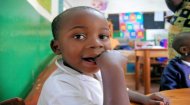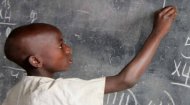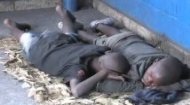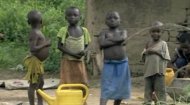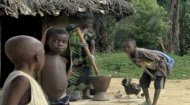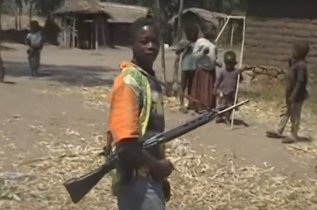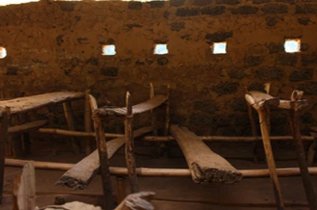|
|

|
Children in DRC |
Children in DRC |
Children in DRC | Children in DRC |
Explore
all about the Democratic Republic of Congo in a series of pictures, videos
and images.
More >
|

|
In fact, 3.5 million children of primary school age are not in school and, of those who do attend, only 67% will complete their sixth grade and of those only 75% will pass their finishing exam. While French is the official language and widely used in education (as well as government) there are four national languages being Kikongo (Kituba), Lingala, Swahili, and Tshiluba. French itself is spoken by approximately 30% of the population however there are around 200 languages in the country in total making the Democratic Republic of Congo one of the most linguistically diverse countries in the world. Children will belong to one of the 250 known ethnic groups however most will be Luba (south-central region), Mongo (north region), and Bakongo who are the largest tribe in DRC and who operate a matriarchal system. (The Bakonga also have large populations in neighbouring countries as well, notably the Republic of Congo.) The majority of children in the Democratic Republic of Congo live in scattered villages in rural areas with the forest peoples (Bambuti) carving out a life by hunting and fishing, while in the savannah areas agriculture is also practised alongside hunting and fishing. In the south of the country, most raise small livestock and poultry but in the east larger livestock rearing is more commonplace. Children live in homes that vary across the country with most villages ranging from what would be considered small with 10 to 25 houses while the largest comprise some 150 to 200 homes. Typically along the eastern grasslands areas are isolated farms and hamlets. Cassava is the staple food in the DRC with maize being the second but, according to UNICEF, an estimated 3.3 million children under five are currently suffering from acute malnutrition in the country with one million of those experiencing severe acute malnutrition. In 2019, child mortality rate for children in the Democratic Republic of the Congo was 84.8 deaths per 1,000 live births with infectious diseases, malnutrition and neonatal and pregnancy-related conditions being the main sources of mortality. The situation is compounded by the ongoing insecurity, COVID-19 pandemic, and poor access to essential services for vulnerable children and families. The video above shows aspects of life in the Democratic Republic of Congo. There are many charities you can contact to help children there together with child sponsor programs. |
